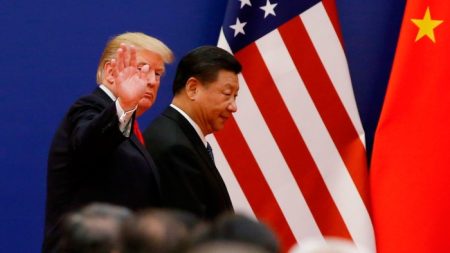Receive free Samsung Electronics Co Ltd updates
We’ll send you a myFT Daily Digest email rounding up the latest Samsung Electronics Co Ltd news every morning.
Samsung Electronics has unveiled its latest foldable phones in South Korea, pinning hopes on the splashy premium phones to help it regain lost ground in the luxury smartphone market.
The South Korean company, holding the latest of its regular “Unpacked” international product launch events in its home country for the first time, has gone all out to lure consumers away from the Apple ecosystem with its annual refresh of its foldable smartphones.
Samsung pioneered the premium niche market of phones with bendable screens four years ago and the segment is at present the only bright spot in the slowing smartphone market. Replacement cycles are getting longer and smartphone makers are finding it increasingly difficult to come up with significant advances in features to entice consumers to buy.
But the foldable format gives room for innovation and has fresh appeal, with research firm IDC expecting shipments to increase 50 per cent this year, even as the smartphone market as a whole contracts 3.2 per cent. Foldables, however, as a proportion of that market, are expected to represent only 1.8 per cent of the 1.2bn smartphones forecast to be sold this year.
Within the segment, Samsung is facing tougher competition. Google’s first Pixel Fold smartphone and a Motorola foldable hit the market last month, while Chinese companies have expanded their line-ups with customised apps developed for extended-screen phones in their local market. Apple is expected to enter the market as early as 2025, which would boost the profile of foldables.
“Samsung has prioritised profitability over volume in the recent past, and an aggressive 2023 foldable series remains critical for it,” said Sanyam Chaurasia, an analyst at Canalys. “This year’s fold series will battle some competition, as form factor remains a key weapon to fight against Apple in the premium segment for all the Android players.”
Samsung’s 2023 versions of its Galaxy Z Flip and Z Fold phones are thinner and lighter. The clamshell-shaped Z Flip 5 has a much larger cover screen, where apps can be used, rather than just displaying notifications. The Z Fold 5 can be transformed from a pocketable smartphone to a widescreen tablet, which features an improved fold-flat hinge.
The launch in South Korea, the company’s biggest market for foldable phones with a 3.8 per cent adoption rate, has come weeks earlier than usual, with Samsung seeking to increase its premium market share before Apple launches its next iPhone.
“Foldables are no longer for a niche market or certain regions. They will soon become a mainstream product globally,” said TM Roh, Samsung’s head of mobile business.
ABI Research forecasts that almost 22.5mn foldable phones will be shipped this year, rising to about 68mn units in 2025 at a compound annual growth rate of 78 per cent. Counterpoint Research expects foldables to account for 30 per cent of the premium smartphone market above $600 by 2027.
However, the shift to foldables has been slower than expected due to high price tags and a lack of “killer apps” optimised for larger screens. “Foldable smartphones need affordability for mass-market appeal, but it’s not enough to beat Apple,” said Amber Liu, an analyst at Canalys, noting that Samsung’s premium smartphone market share fell from 28 per cent to 21 per cent last year, while Apple’s increased from 62 per cent to 72 per cent.
“There is still work to be done in terms of hardware reliability and app optimisation,” said IDC analyst Bryan Ma. “Those are likely big reasons why Apple is holding back too.”
Foldables are the only premium segment in which Samsung is leading, with a commanding 79 per cent market share last year. The company aims to raise its proportion of foldable phones to half of its premium smartphone sales by 2025.
However, its share of the foldable market fell to 65 per cent in the first quarter of this year, as Chinese rivals Oppo and Huawei took 17 per cent and 10 per cent of the global market respectively, according to IDC.
Chinese manufacturers “have improved their technology as they rolled out a stream of foldables in their home market”, said Jene Park, a senior analyst at Counterpoint Research. “From this year, they will bring their products overseas, forcing Samsung into direct competition with them in non-China markets.”
China emerged as the biggest market for foldables last year and Samsung has targeted it in the hope of regaining market share there, which has fallen to less than 1 per cent.
“The country is a hotbed, and if you want to make it in foldables, you have to make it there,” said Tom Kang, research director at Counterpoint.
But IDC’s Ma said China was “another world of its own”, given the advantage of Chinese companies in optimising apps with local developers without the need for Google services. In China, Oppo was the foldable market leader with a 38 per cent share in the first quarter, followed by Huawei at 25 per cent and Samsung at 18 per cent.
“Samsung still has the advantage of experience, having learnt the hard way four years ago about how to make its products more durable,” said Ma. “[But] foldables alone won’t change Samsung’s fortunes in China, especially when homegrown heroes like Oppo, Huawei and Honor are in favour there with their own competing products.”
Read the full article here













